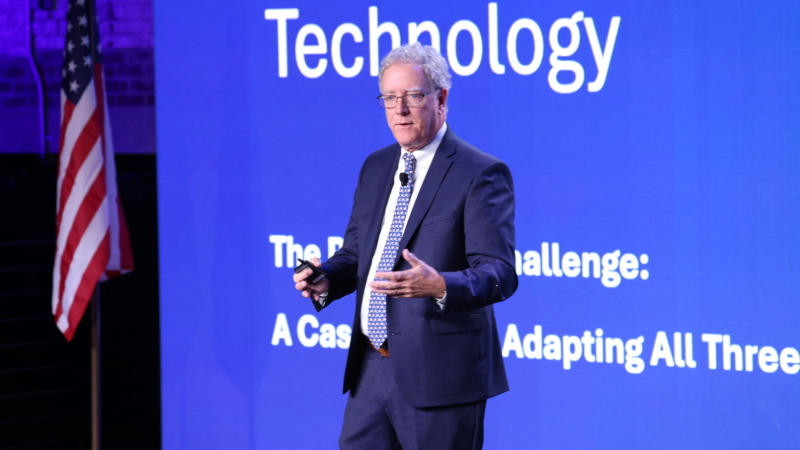
A former senior official with the Transportation Security Administration (TSA) said on Wednesday at the Pega Government Empowered conference in Washington that success in technological transformation – especially in times of disruption – needs to rely on equal parts of correctly managing people, process, and technology.
Austin Gould, who was Assistant Administrator for Requirements and Capabilities Analysis at TSA from 2018 to 2021 following a 30-year career in the Coast Guard, talked about the combination of those three factors in transformation efforts – “because you can’t have one without the other two.”
“You’ve got to integrate everything, you’ve got to integrate the people with the technology,” he said, emphasizing, “you can focus on all three elements simultaneously.”
Gould peppered his remarks with real-life examples during his career when all three factors were combined for good results – and when they were not.
One such example stemmed from his Coast Guard experience where motor lifeboats ordered up by the service required harness-equipped seats for the crews. But in testing it became apparent that the seats were positioned too far from the controls of the boat – requiring the pilot to stand up and thus lose the ability to be harnessed for safety.
“That’s a little anecdote about how we can maybe do things better,” Gould said.
TSA – which Gould called the most public facing of all Federal agencies as it clears more than three million airline passengers a day – “reinvented the screening process” during the coronavirus pandemic when it was driven by the need to put masks, barriers, and distance between agency screeners and airline travelers.
“We changed all sorts of processes on the fly,” he said.
Those included deployments of new algorithms used with imaging technologies to screen passengers, which resulted in less physical pat-downs of passengers. “That’s a technology change,” he said, but one that also resulted in a “fundamental change of process.”
Further, Gould said, TSA was able to change its processes for carry-on bag screening so that if a bag went through an X-ray machine and triggered an alarm, it would be sent back to be examined by the machine again, rather than have a TSA officer physically inspect the bag.
He also said that TSA was able to accelerate its biometric identification program. “We call it credential authorization technology (CAT) where you take out your identification and stick it into a machine” to be examined so that a TSA officer no longer has to handle the ID card.
“That’s the chance for disease transmission – it’s touching, and nobody wanted to do that during COVID,” he said, adding, “quite frankly, we need to get away from it even more now.”
“We were able to accelerate that program, we were able to accelerate a biometric identification program,” Gould said.
“To me, I call it the trifecta for TSA screening,” he said. “Believe me, the agency is on the cutting edge of this particular initiative as biometrics provides better security.”
Not all of the agency’s new ideas were good ones, however, as Gould recalled testing of systems to sanitize plastic luggage bins with ultraviolet light that left the bins smelling liked burned plastic “that people just couldn’t deal with.”
“So again, we tried it – people, process, technology, you’ve got to have all three,” he said. “We had a good tech solution that probably would help the process but it was just untenable for the people.”
Going forward, Gould said that “from a technology perspective and from a people perspective, the future is very, very bright for TSA.”
Along with continuing to develop advanced algorithms to make its scanning machines more accurate, he pointed to a Department of Homeland Security-funded project that is looking into self-screening systems for TSA. “Self-screening gets a lot of talk now at TSA, and there’s a lot of interest in it … from our partners in the aviation ecosystem,” he said.
